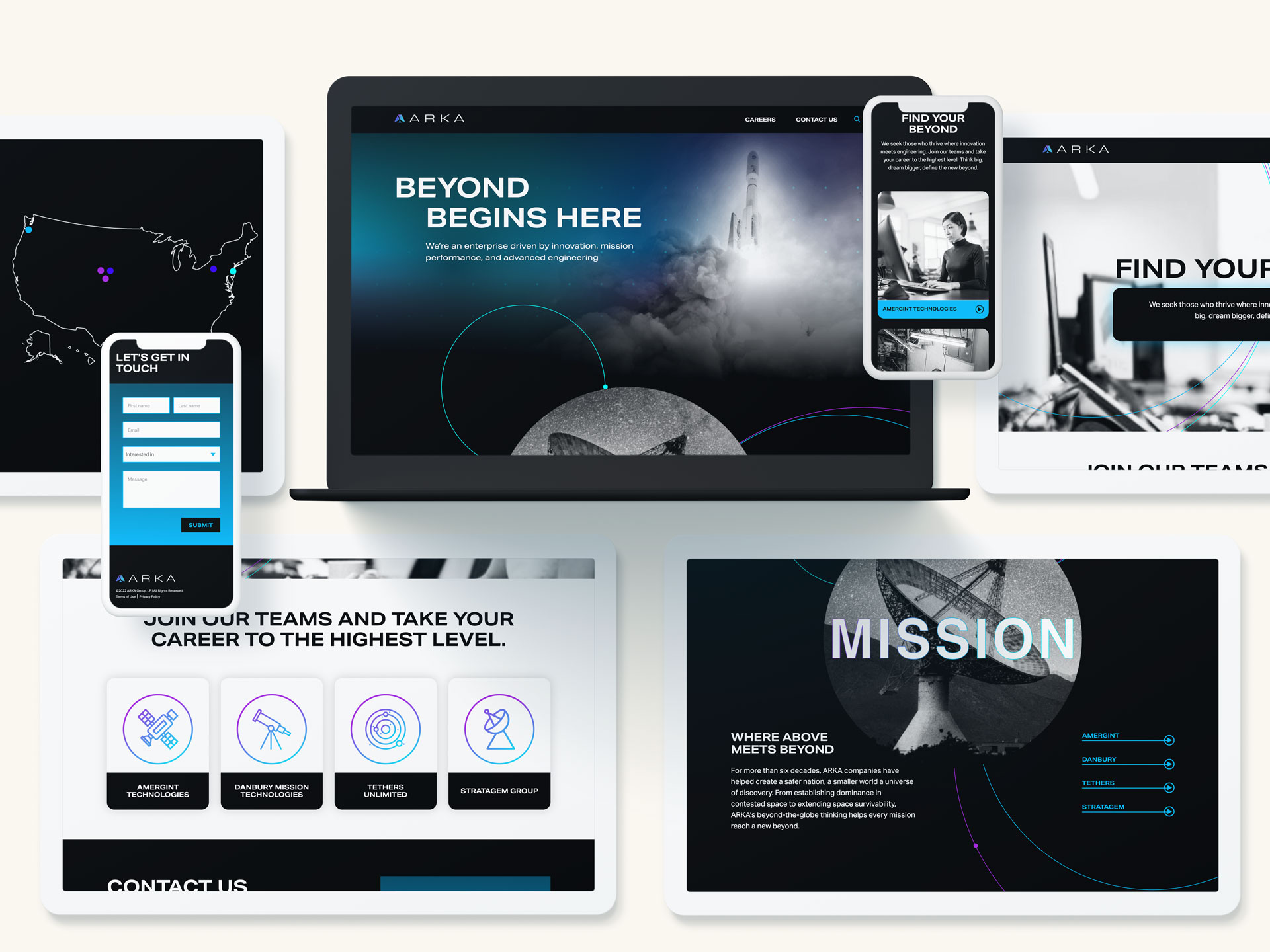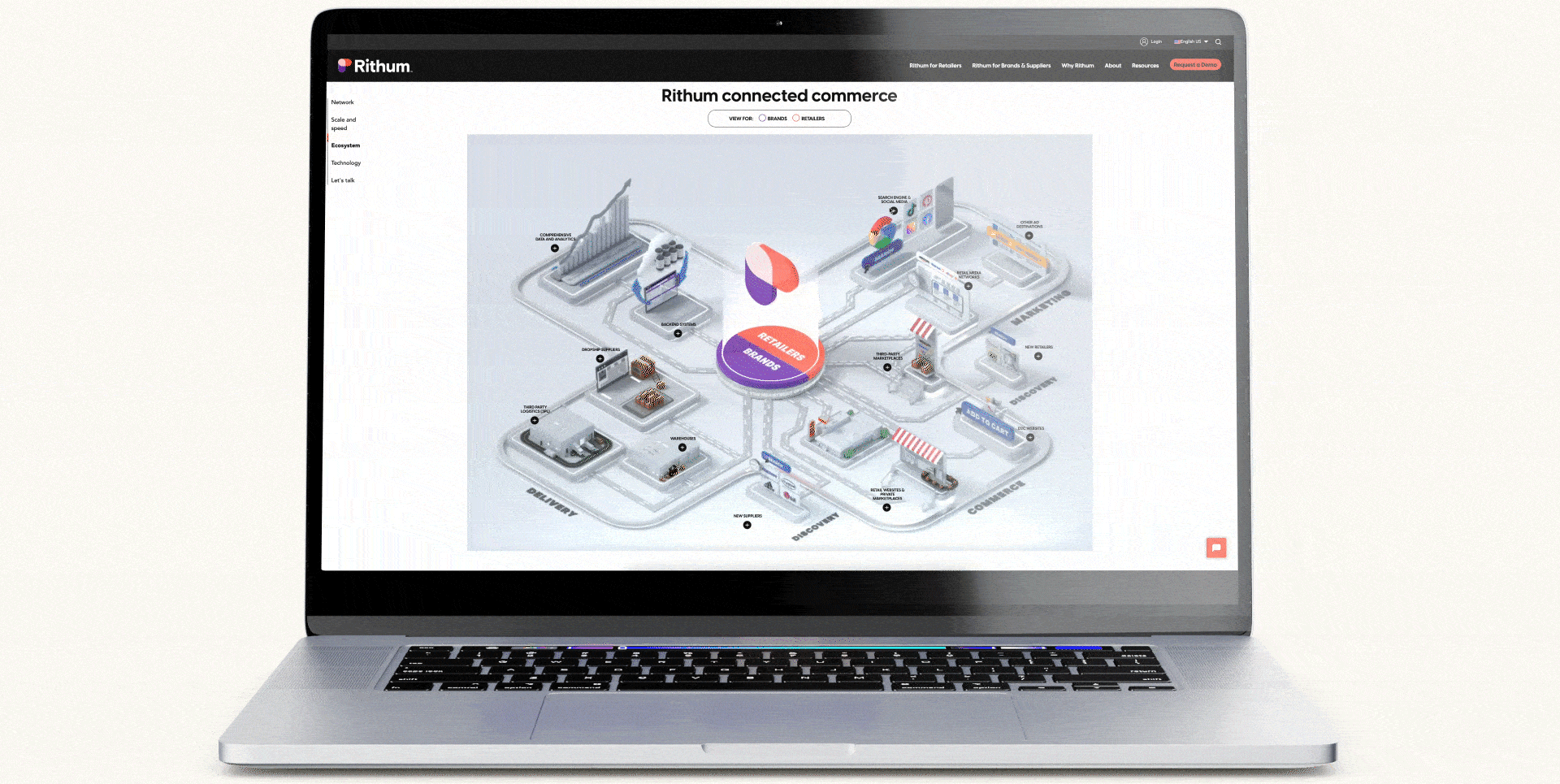In the defense industry, where competition is fierce and stakes are high, effective marketing strategies are critical for contractors looking to differentiate their offerings. Success in the B2G space hinges on building trust, demonstrating value, and adapting to the complexities of government procurement.
The Challenges of Marketing in the Defense Industry
The defense industry operates in a highly regulated and specialized environment, posing unique challenges for marketers:
- Complex Buying Cycles: Decision-making in the defense sector involves long timelines and multiple stakeholders.
- Strict Regulatory Compliance: Marketing must adhere to strict regulations governing communications with government agencies.
- Highly Competitive Market: Contractors compete not only on technical capabilities but also on pricing, reliability, and reputation.
- Evolving Buyer Expectations: Government and military buyers increasingly seek innovative solutions that align with evolving strategic needs.
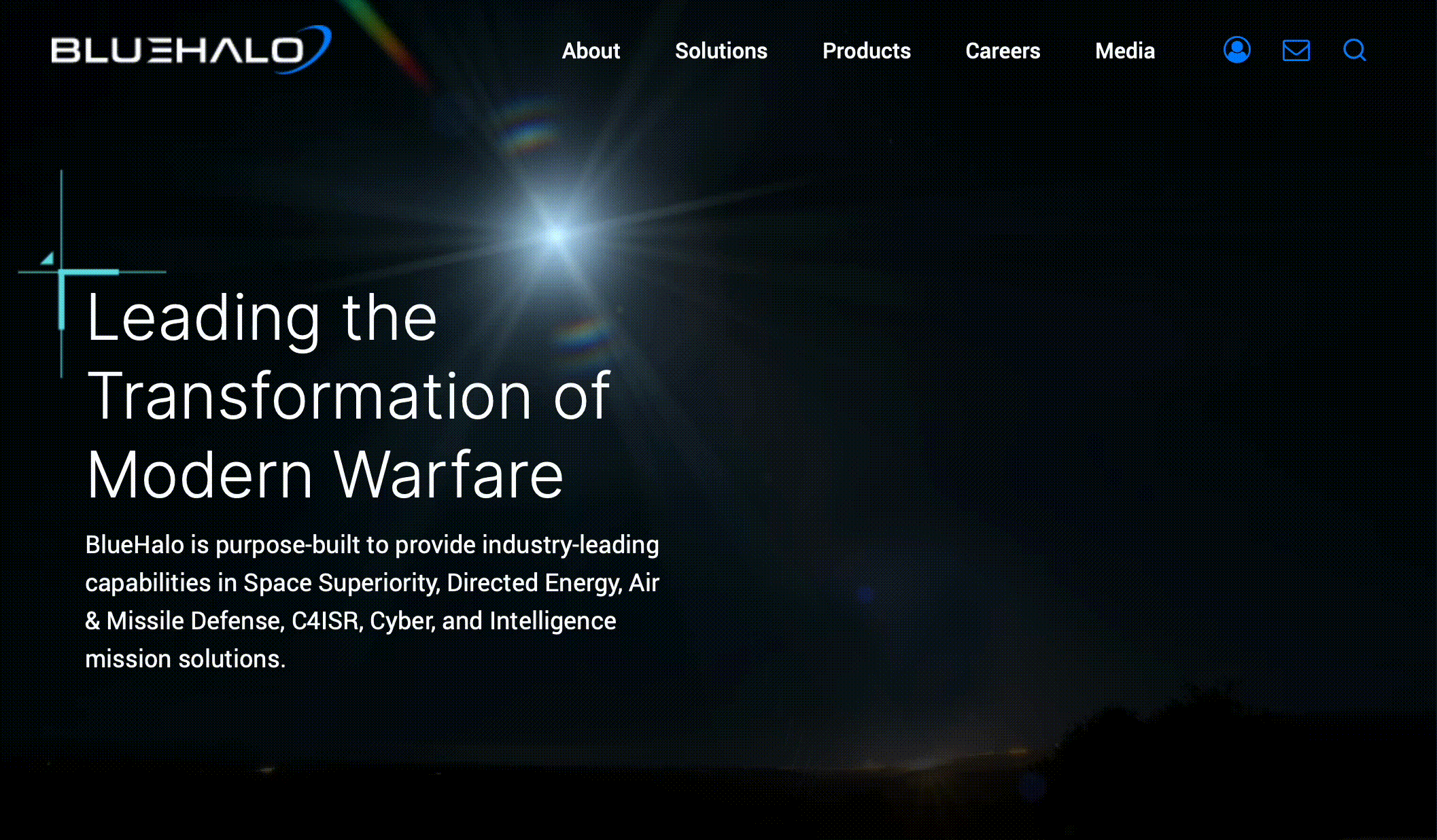
Strategies for Standing Out in the Defense Market
- Establish Thought Leadership
Positioning your company as a trusted expert is vital in the defense industry. Thought leadership builds credibility and demonstrates your firm’s ability to anticipate and address industry challenges.
How to Execute:
- Publish white papers, reports, and research that address pressing defense issues.
- Host webinars or participate in industry events to share expertise.
- Create content that demonstrates how your solutions align with national security priorities.
- Highlight Proven Performance
Buyers in the defense industry prioritize reliability and proven results. Sharing evidence of past successes builds confidence in your ability to deliver.
How to Execute:
- Develop case studies showcasing successful project outcomes.
- Incorporate testimonials from satisfied clients, emphasizing measurable results.
- Use video content to visually highlight key achievements.
- Emphasize Innovation and Adaptability
Innovation is a key differentiator in the defense industry, where agencies seek cutting-edge solutions to stay ahead of evolving threats. Demonstrating adaptability further reinforces your relevance in a dynamic environment.
How to Execute:
- Highlight research and development (R&D) investments in marketing materials.
- Showcase unique features of your solutions that set you apart from competitors.
- Address how your offerings evolve to meet emerging challenges.
- Tailor Messaging to Key Decision-Makers
Defense procurement involves a wide array of stakeholders, from technical evaluators to high-ranking officials. Tailored messaging ensures you address the priorities of each audience.
How to Execute:
- Segment messaging by roles, focusing on technical details for engineers and strategic value for executives.
- Use targeted email campaigns to reach specific decision-makers.
- Develop presentations and collateral that speak directly to each audience’s pain points.
- Leverage Digital Channels Strategically
While traditional methods like trade shows remain important, digital marketing plays an increasingly central role in reaching defense buyers.
How to Execute:
- Optimize your website for search terms relevant to defense procurement.
- Use social media to share thought leadership content and engage with industry conversations.
- Implement targeted digital advertising to reach procurement officials and influencers.
Measuring the Impact of Your Marketing Efforts
Given the long buying cycles in the defense sector, tracking success requires a mix of short- and long-term metrics. Key performance indicators (KPIs) include:
- Lead Generation: Track the number of qualified leads from marketing campaigns.
- Engagement Metrics: Monitor content downloads, webinar attendance, and website traffic.
- Pipeline Contribution: Measure the influence of marketing efforts on sales pipeline growth.
- Client Feedback: Collect qualitative feedback to refine messaging and strategy.
Final Thoughts: Differentiating in a Competitive Market
Standing out in the defense industry requires a multi-faceted approach that builds trust, highlights proven results, and adapts to the needs of a complex market. By investing in thought leadership, tailored messaging, and digital engagement, contractors can effectively position themselves as indispensable partners to government and military clients.
Partner with Bluetext for Defense Industry Marketing Expertise
At Bluetext, we specialize in helping defense contractors navigate the complexities of B2G marketing. From crafting compelling content to developing targeted campaigns, we’ll help you differentiate your brand and drive success in a competitive market. Contact us today to learn how we can elevate your marketing efforts.
With agencies like the EPA driving federal priorities, resilience and industrial strength are emerging as key themes in government procurement. For B2G companies, aligning messaging with these trends is essential to stay competitive and relevant.
The Shifting Federal Landscape
Federal agencies are increasingly prioritizing themes of resilience and industrial strength as they respond to complex challenges—climate change, infrastructure modernization, supply chain security, and economic recovery.
- Resilience: The focus on resilience spans physical infrastructure, cybersecurity, and operational continuity. Agencies are seeking solutions that can endure disruptions, adapt to challenges, and ensure long-term reliability.
- Industrial Strength: Promoting domestic manufacturing, improving supply chain security, and fostering economic growth are top priorities for agencies like the EPA and the Department of Energy.
For businesses targeting the federal market, messaging must reflect these priorities, demonstrating how their solutions align with agency goals while adhering to compliance requirements.
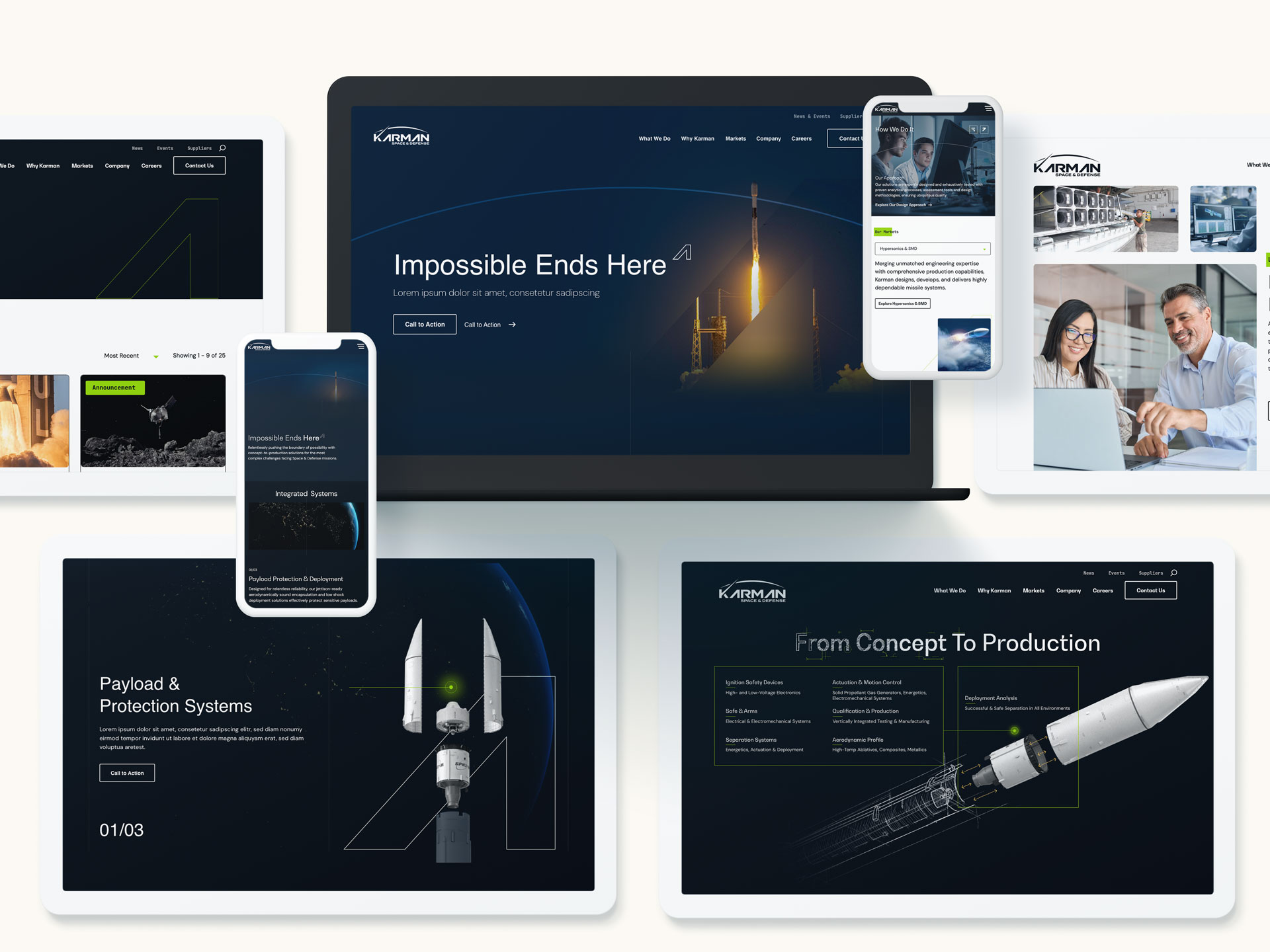
Why Resilience and Industry Matter in B2G Messaging
Federal Agencies Need Solutions That Withstand Disruptions
From infrastructure resilience against natural disasters to cybersecurity resilience against evolving threats, government agencies are focused on safeguarding critical systems. B2G companies that position their solutions as reliable, adaptive, and future-proof can align with this federal priority.
Supporting Economic and Industrial Goals
Agencies are under pressure to strengthen domestic industries, secure supply chains, and boost economic recovery efforts. Messaging that highlights industrial strength—such as U.S.-based manufacturing, supply chain transparency, and innovation—will resonate with decision-makers.
Compliance as a Baseline
Regulatory compliance remains non-negotiable in B2G marketing. However, aligning with emerging priorities like resilience and industrial strength goes beyond compliance—it’s about demonstrating value, innovation, and alignment with broader federal goals.

Key Strategies to Align B2G Messaging with Federal Trends
- Integrate Resilience into Your Value Proposition
B2G companies should frame their solutions as tools for resilience. Whether it’s a secure technology platform, durable infrastructure, or adaptive process, emphasize how your offerings help agencies:
- Mitigate risks and disruptions
- Ensure operational continuity during crises
- Adapt to evolving challenges and needs
- Emphasize Industrial Strength and Supply Chain Security
Federal agencies are increasingly prioritizing domestic sourcing and industrial innovation. Companies can align with these goals by messaging around:
- U.S.-based production and contributions to economic growth
- Transparent, secure, and resilient supply chains
- Investments in innovation that support federal missions
- Leverage Real-World Examples to Build Credibility
Case studies and examples of successful implementation are critical in building trust. Highlight:
- Projects where your solutions improved resilience, such as disaster-proof infrastructure or mission-critical technology
- Contributions to industrial strength, such as local job creation, reduced supply chain vulnerabilities, or sustainable economic impact
Agencies respond to proof points—showing measurable results will elevate your messaging above competitors.
- Align Messaging with Key Agency Priorities
Tailor messaging to the specific goals of federal agencies. For example:
- EPA: Highlight solutions that support environmental resilience, sustainable infrastructure, and resource optimization
- DOE: Emphasize contributions to energy security, industrial innovation, and modernization
- FEMA and DHS: Focus on operational resilience, risk mitigation, and disaster response
Understanding each agency’s mission allows for targeted messaging that demonstrates alignment and relevance.
- Balance Compliance with Forward-Thinking Themes
While compliance is the entry point for federal contracts, forward-thinking messaging is what wins trust. Go beyond regulatory adherence to demonstrate how your company anticipates future federal needs—like emerging climate challenges, cybersecurity risks, or workforce resilience.

Preparing for the Next Wave of Federal Procurement Trends
To stay ahead, B2G companies must continuously monitor emerging procurement trends and priorities. Looking forward:
- Resilience will expand beyond physical infrastructure to include digital and workforce resilience.
- Industrial strength will remain a focus, with growing emphasis on domestic manufacturing and supply chain innovation.
- Sustainability and environmental impact will play an increasing role in agency decisions.
Businesses that proactively integrate these trends into their branding and messaging will be well-positioned to win federal contracts.
Final Thoughts: Winning with Resilience and Industry
In a federal market shaped by resilience, industrial strength, and evolving priorities, B2G companies must craft messaging that speaks directly to these themes. By aligning with agency goals, demonstrating measurable value, and anticipating future needs, businesses can build trust and stand out in competitive procurement cycles.
Partner with Bluetext to Align Your B2G Strategy
Navigating federal trends requires expertise and precision. At Bluetext, we help B2G companies craft compelling messaging that aligns with government priorities, builds credibility, and drives results. Contact us today to learn how we can position your brand for success in the evolving federal marketplace.
For professional services firms, content marketing plays a pivotal role in establishing authority and building trust with B2B clients. In an industry where expertise is the ultimate currency, delivering valuable, targeted content can set firms apart and drive meaningful engagement.
The Role of Content Marketing in Professional Services
Professional services firms thrive on credibility and trust. Unlike product-based businesses, their value lies in intangible offerings such as expertise, insights, and tailored solutions. Content marketing provides a powerful avenue to showcase these strengths while addressing the unique challenges of B2B buyers:
- Educating Decision-Makers: B2B buyers in professional services often require in-depth understanding before making purchasing decisions. Content such as white papers, blogs, and webinars can provide the knowledge they need to move forward with confidence.
- Demonstrating Expertise: Thought leadership content, such as industry analyses or expert opinions, helps position firms as authorities in their field.
- Building Trust Over Time: Consistent, high-quality content fosters familiarity and reliability, which are key to winning long-term engagements.
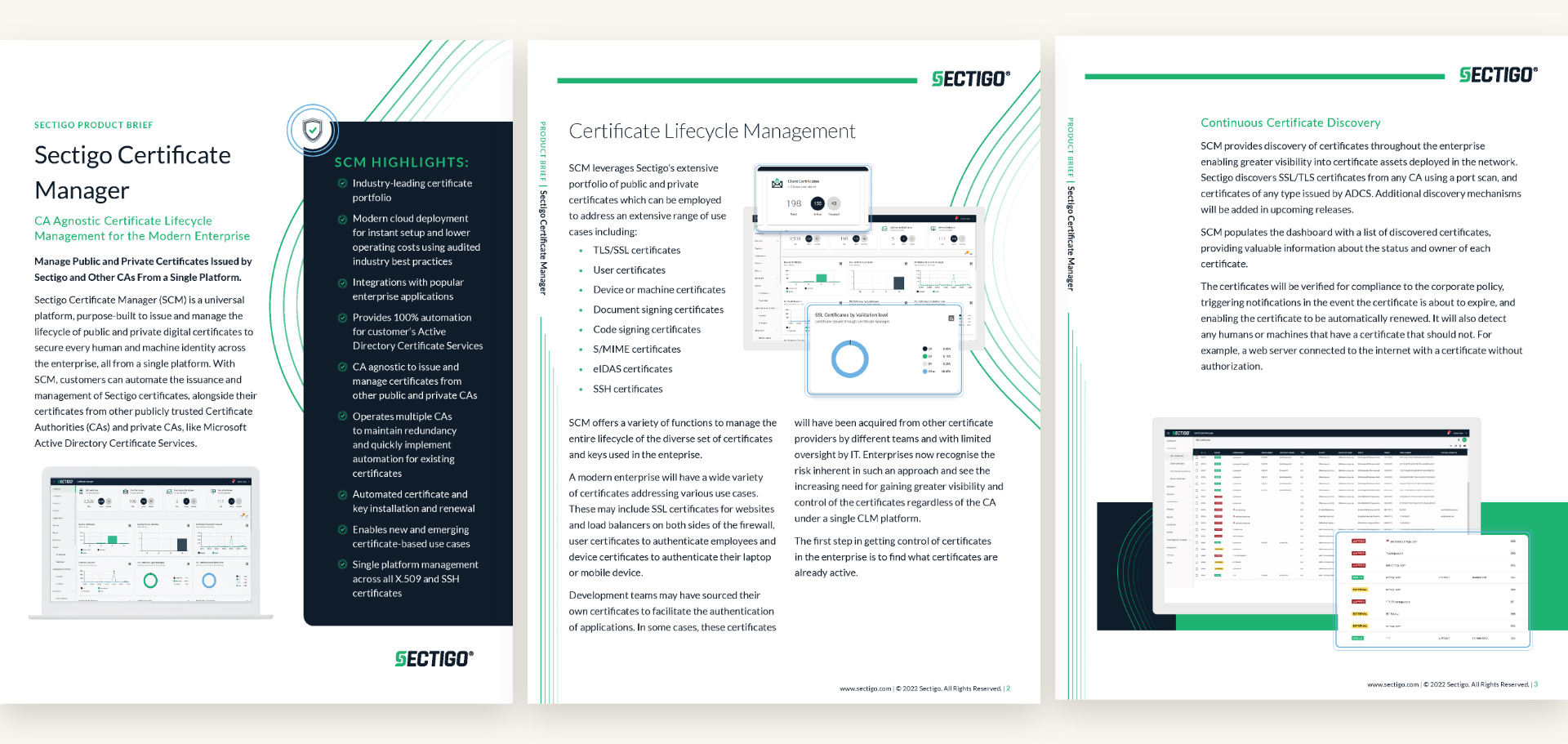
Key Content Marketing Strategies for Professional Services Firms
- Develop a Thought Leadership Program
Thought leadership is a cornerstone of content marketing for professional services. By sharing unique perspectives and innovative ideas, firms can:
- Demonstrate industry expertise and forward-thinking approaches.
- Build credibility with target audiences and differentiate themselves from competitors.
How to Execute:
- Create a steady stream of thought-provoking articles, white papers, and reports.
- Participate in podcasts, webinars, and industry panels to amplify your voice.
- Share proprietary research or data to provide exclusive insights.
- Prioritize Client-Centric Content
B2B clients seek solutions tailored to their specific pain points. Crafting content that addresses these needs directly can:
- Showcase your understanding of industry challenges.
- Offer actionable advice that resonates with decision-makers.
How to Execute:
- Develop case studies that illustrate your success in solving client challenges.
- Write blogs or guides that answer common client questions.
- Segment your content by industry, business size, or role to ensure relevance.
- Leverage Multiple Content Formats
Different clients consume content in different ways. Diversifying your content formats ensures you reach your audience effectively. Consider:
- Blogs and articles for quick insights.
- Video explainers or tutorials for visual learners.
- Webinars or workshops for in-depth discussions.
How to Execute:
- Use a mix of written, visual, and interactive content to cater to varied preferences.
- Repurpose existing content into new formats, such as turning a white paper into an infographic or a series of blog posts.
- Harness the Power of SEO
Search engine optimization (SEO) ensures your content reaches your audience at the right time. Optimized content drives visibility and attracts qualified leads.
How to Execute:
- Conduct keyword research to identify the terms your audience is searching for.
- Optimize headlines, meta descriptions, and content for search engines.
- Build a library of evergreen content that remains relevant over time.
- Nurture Relationships Through Email Marketing
Email marketing is a powerful tool for engaging prospects and nurturing existing client relationships. By delivering targeted, valuable content directly to their inbox, you can:
- Keep your firm top of mind.
- Provide consistent value over the course of the buyer’s journey.
How to Execute:
- Develop segmented email campaigns tailored to different stages of the sales funnel.
- Share exclusive content, such as industry reports or invitations to events.
- Use analytics to refine your approach based on open and click-through rates.
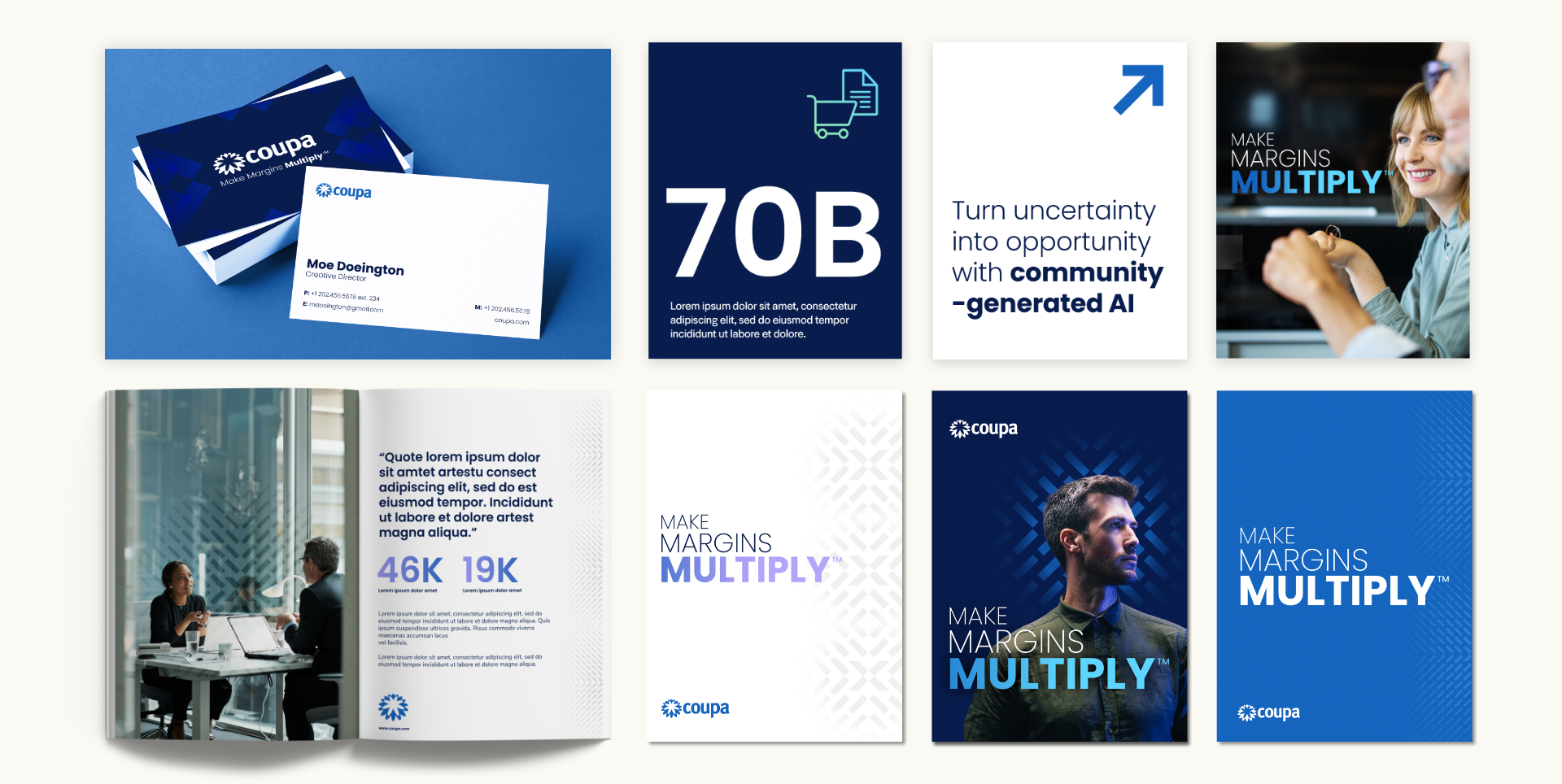
Measuring the Impact of Your Content Marketing Efforts
To ensure your content marketing strategies are effective, it’s essential to track performance and refine your approach. Key metrics to monitor include:
- Engagement Metrics: Track page views, time on site, and shares to gauge content resonance.
- Lead Generation: Measure the number of qualified leads generated through content-driven efforts.
- Conversion Rates: Assess how effectively content drives prospects to take desired actions.
- Client Feedback: Solicit feedback on the value of your content to understand its impact on decision-making.
Final Thoughts: Building Authority Through Content
In the competitive landscape of professional services, content marketing is not just an add-on; it’s a necessity. By delivering valuable, client-focused content, firms can establish themselves as trusted advisors, differentiate from competitors, and drive long-term success.
Partner with Bluetext for Content Marketing Success
At Bluetext, we specialize in crafting content marketing strategies that help professional services firms showcase their expertise and connect with B2B clients. Contact us today to learn how we can elevate your content efforts and drive measurable results.
The government’s reliance on telecom solutions is more critical than ever. With growing demands for secure, reliable, and innovative networks, telecom firms have a unique opportunity to support agencies and institutions. However, successfully marketing to the public sector requires a nuanced approach.
Understanding the Government Market for Telecom Solutions
Governments at every level—federal, state, and local—rely on robust telecom infrastructure to deliver essential services, enable secure communications, and support mission-critical operations. From defense systems and emergency response to the growing demands of digital transformation, telecom solutions play a pivotal role.
Why Telecom Matters to Government: Governments require networks that are secure, resilient, and capable of supporting emerging technologies like 5G, IoT, and cloud-based communications. The rapid pace of innovation presents opportunities to modernize infrastructure and deliver greater efficiency.
The Complexity of the B2G Market: Unlike traditional B2B or B2C markets, the Business-to-Government (B2G) sector is defined by unique challenges. Procurement processes are highly structured, sales cycles are long, and decision-making involves multiple stakeholders. Agencies prioritize security, compliance, and proven reliability over cutting-edge features alone.
Understanding these dynamics is essential for telecom firms looking to position their solutions effectively in the government market.
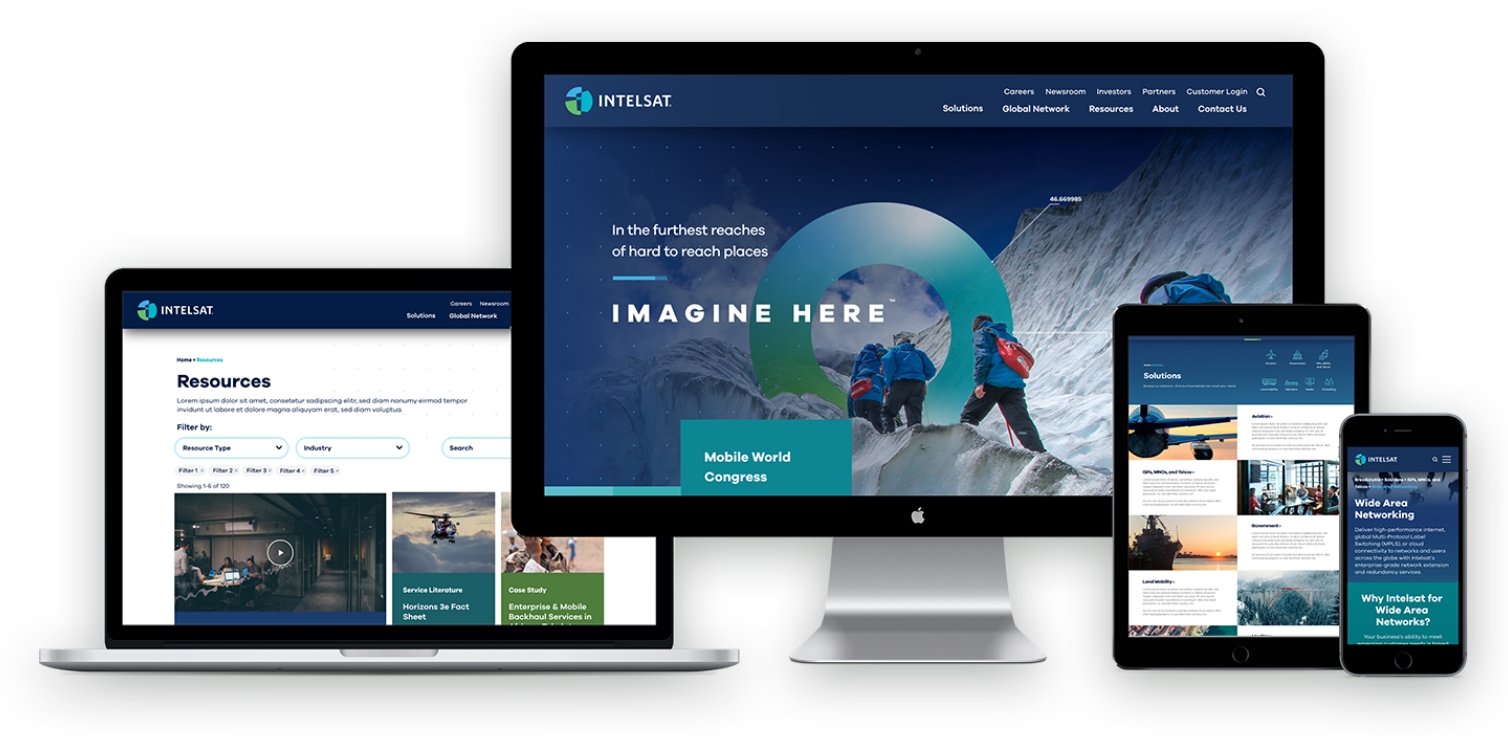
Key Challenges in Marketing Telecom Solutions to Government
Navigating Regulatory Hurdles
Government procurement is heavily regulated. Telecom firms must ensure compliance with standards such as FedRAMP (Federal Risk and Authorization Management Program), NIST (National Institute of Standards and Technology), and other federal or agency-specific frameworks. Failing to meet these standards can disqualify solutions from consideration.
Building Trust and Credibility
Trust is paramount in the public sector. Agencies need assurances that telecom solutions will deliver on promises without compromising security or performance. Firms face the challenge of overcoming skepticism toward untested technologies, requiring a strong focus on case studies, certifications, and real-world proof points.
Procurement Complexity
Government procurement is a rigorous process. From Requests for Proposals (RFPs) to contract awards, telecom firms must navigate competitive bids, align their solutions with strict requirements, and anticipate lengthy timelines. Understanding the nuances of procurement cycles is critical for success.
Cybersecurity Concerns
With cyber threats on the rise, government agencies place heightened importance on secure telecom networks. Telecom firms must balance innovation with security, ensuring their solutions adhere to stringent cybersecurity mandates while offering cutting-edge performance.
![]()
![]()

Opportunities for Telecom Firms in the Government Sector
Digital Transformation in Government
Governments are increasingly prioritizing digital transformation initiatives. From smart city projects to next-generation infrastructure, telecom solutions serve as the backbone for modernization efforts. Firms can position their offerings as essential tools for improving connectivity, efficiency, and service delivery.
5G and Emerging Technologies
The rollout of 5G networks presents a transformative opportunity. Government agencies are exploring ways to leverage 5G, IoT, and cloud technology to enhance public services, communication systems, and defense operations. Telecom firms that showcase these capabilities can differentiate themselves as forward-thinking partners.
Cybersecurity as a Differentiator
Security is non-negotiable in government telecom solutions. Providers that prioritize cybersecurity—through certifications, secure infrastructure, and compliance—can leverage this as a key value proposition to build trust with agencies.
Strategic Partnerships
Collaborating with technology providers, systems integrators, and public-sector consultants can help telecom firms deliver comprehensive solutions. Strategic partnerships ensure alignment with government needs while expanding opportunities for larger contracts and projects.
Effective Strategies to Market Telecom Solutions to Government
Focus on Value-Driven Messaging
Government agencies prioritize outcomes, not just features. Telecom firms should emphasize the tangible benefits of their solutions—cost savings, improved efficiency, enhanced security, and mission success. Align messaging with specific agency priorities, showing how telecom infrastructure supports their goals.
Leverage Case Studies and Proof Points
Credibility is essential in the government market. Telecom firms should showcase successful implementations, complete with measurable results and real-world use cases. Case studies, certifications, and testimonials from other public-sector clients help build confidence in their solutions.
Navigate the RFP Process with Precision
Success in government sales often hinges on the RFP process. Telecom firms should invest in crafting tailored, detailed responses that align closely with agency requirements. Understanding procurement structures and adhering to compliance guidelines are critical.
Thought Leadership and Industry Presence
Establishing expertise is key to building credibility. Telecom providers can participate in government-focused conferences, webinars, and trade shows to showcase their solutions. Thought leadership through blogs, white papers, and research papers demonstrates knowledge of government priorities and challenges.
Targeted Digital and Account-Based Marketing (ABM)
Reaching decision-makers in government requires a targeted approach. Account-based marketing strategies can help telecom firms tailor outreach to key agencies and stakeholders. Digital campaigns that address specific agency pain points and priorities will resonate more effectively.
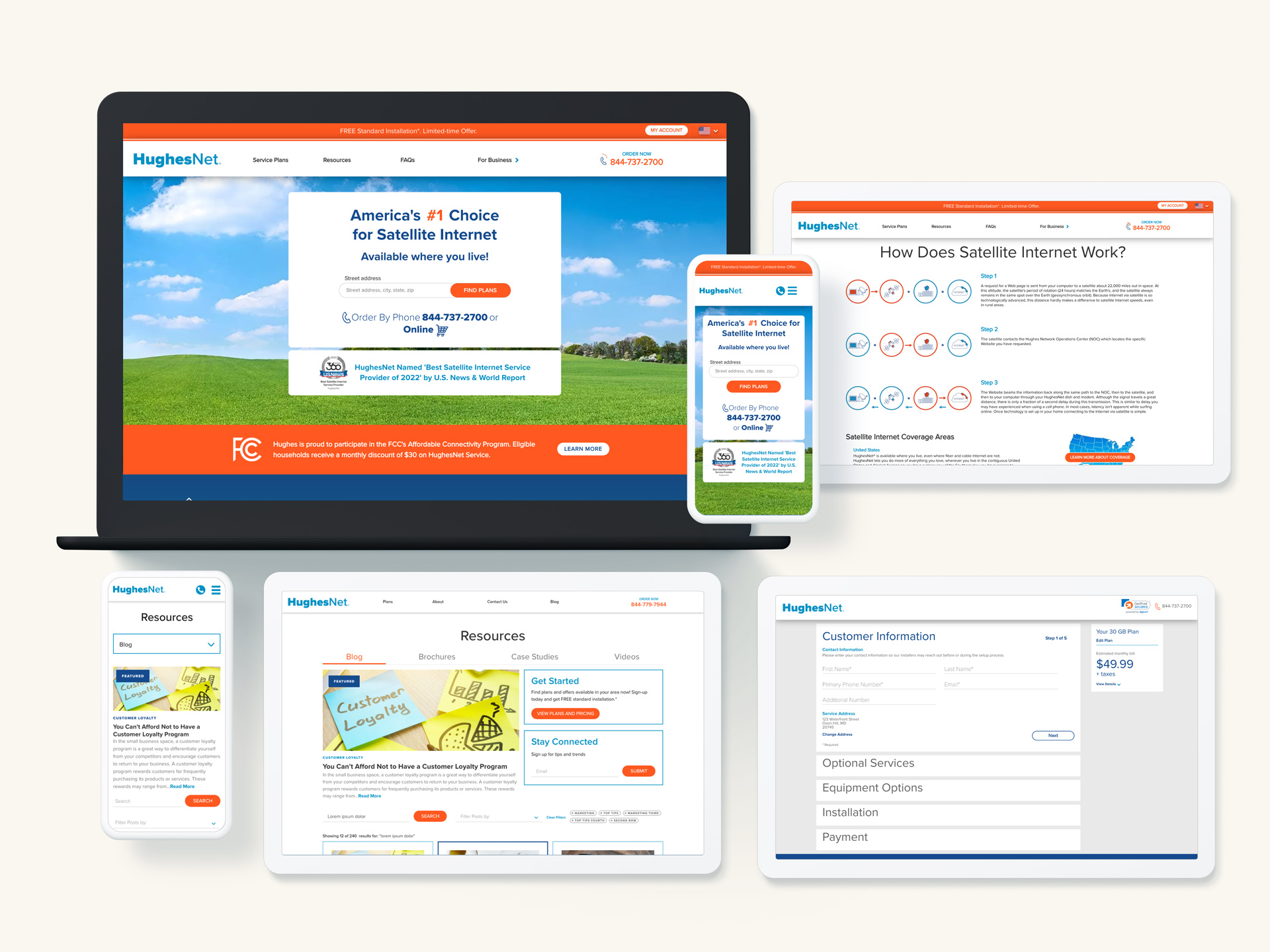
Final Considerations for Telecom Firms
Successfully marketing telecom solutions to the government requires a blend of patience, persistence, and expertise. By navigating regulatory challenges, addressing cybersecurity concerns, and positioning their solutions as essential for digital transformation, telecom firms can build strong relationships with government agencies.
The key lies in building trust, aligning offerings with agency missions, and delivering measurable value. Telecom providers who embrace a strategic, value-driven approach will be well-positioned to win in this complex but rewarding market.
Let’s Connect
Need help crafting a winning strategy to market telecom solutions to government agencies? Bluetext has the expertise to position your brand, build trust, and drive results in the public sector. Contact us today to learn how we can help you navigate the B2G market and reach your goals.
Marketing government contractor services requires a distinct approach. With federal, state, and local agencies carefully vetting their vendors, competition is fierce, and standing out is essential. Success hinges on developing messaging that conveys value, trust, and alignment with government priorities. This blog explores the strategies and insights needed to craft a winning message for government buyers.
Understanding the Government Buyer
Key Challenges Government Buyers Face
Government buyers often operate under tight budget constraints, face complex procurement processes, and must adhere to strict compliance requirements. These challenges demand that contractors offer not just products or services but solutions that simplify and enhance their operations.
Priorities of Government Buyers
Government agencies prioritize cost-effectiveness, risk mitigation, and mission-critical outcomes. Contractors who understand these priorities and craft their messaging to address them will stand out in a crowded market.
Tailoring Messaging to Align with Their Needs
- Emphasizing Cost-Effectiveness: Showcase your ability to maximize taxpayer value.
- Highlighting Reliability and Proven Success: Provide evidence of consistent performance and successful project delivery.
- Communicating Alignment with Agency Goals: Demonstrate an understanding of specific agency missions and how your services support their objectives.

The Foundation of a Winning Message
Clarity and Simplicity
Government buyers need to quickly grasp the value of your offerings. Avoid technical jargon and present your value proposition in clear, concise terms that resonate with decision-makers.
Focus on Outcomes
Rather than emphasizing features, shift the narrative to benefits and measurable results. For instance, highlight how your solution improves operational efficiency, reduces costs, or enhances security.
Proof of Credibility
Trust is paramount in government contracting. Showcase certifications, past performance, case studies, and partnerships with other agencies to establish your credibility and expertise.
Crafting Value-Driven Messaging
1. Highlight Cost-Effectiveness
Government agencies must justify their spending to taxpayers. Position your services as a cost-effective choice by showcasing ROI, long-term savings, and value-added benefits.
2. Address Compliance and Risk Mitigation
Compliance is a top concern. Emphasize your adherence to relevant regulations such as FAR/DFAR and explain how your services reduce operational, financial, or security risks.
3. Align with Mission Goals
Every government agency has a unique mission. Tailor your messaging to demonstrate how your offerings directly contribute to achieving their objectives. For instance, when marketing to FEMA, emphasize capabilities related to disaster response and recovery.
Strategies for Multi-Tiered Messaging
Federal Agencies
Federal agencies often require scalable and innovative solutions that can support large-scale operations. Messaging should focus on your ability to handle complexity and deliver results at scale.
State Agencies
State agencies value regional expertise and the ability to address local challenges. Highlight your familiarity with regional needs and the community impact of your services.
Local Agencies
For local agencies, responsiveness and personalized service are key differentiators. Emphasize your ability to provide tailored solutions and swift support.
Channels for Amplifying Your Message
Direct Outreach
Engage decision-makers through targeted emails, government-specific events, and one-on-one meetings to build strong relationships.
Digital Marketing
Optimize your online presence with paid media, SEO targeting government procurement keywords, and LinkedIn campaigns aimed at government audiences.
Content Marketing
Publish blogs, white papers, and thought leadership pieces that address pain points in the industry. This positions your brand as a trusted advisor and expert.
The Metrics of Success
Tracking RFP Conversion Rates
Measure how many RFP responses convert into contracts to evaluate the effectiveness of your messaging.
Monitoring Engagement Metrics
Analyze digital campaign performance, including clicks, shares, and inquiries from government audiences.
Client Feedback
Gather input from agency clients to refine your messaging and better address their evolving needs.
The Art of Messaging for Government Contractors
Crafting a winning message requires a deep understanding of government buyers, a focus on value-driven outcomes, and clear communication of your unique advantages. By aligning your messaging with the priorities of federal, state, and local agencies, you can maximize your competitive edge and build lasting relationships.
Scaling a SaaS company from startup to enterprise is no small feat. While landing the first 100 clients is a significant milestone, the strategies that worked early on won’t necessarily sustain growth. As the customer base grows, marketing efforts must evolve to support scalability and segmentation. This blog explores how SaaS companies can transition their marketing strategies to thrive in their next phase of growth.
From Startup to Scale-Up: Evolving Your Marketing Mindset
The journey from startup to scale-up requires a fundamental shift in marketing strategy. In the early days, growth often relies on founder-led sales and grassroots efforts. But as the business matures, a more structured approach becomes essential.
Understanding the Shift
Scaling up means moving beyond ad hoc tactics to a professionalized marketing framework. The focus expands from simply acquiring customers to also retaining and growing their value over time.
Aligning Marketing with Growth Goals
Growth at scale demands a balanced approach:
- Acquisition: Attracting new customers through targeted campaigns.
- Retention: Ensuring existing clients stay engaged and loyal.
- Expansion: Upselling and cross-selling within the customer base to maximize lifetime value.
Building a Scalable Infrastructure
To enable this evolution, companies must invest in:
- Robust marketing automation tools.
- Data platforms for real-time insights.
- A talented team with expertise in segmentation, content, and demand generation.
Scaling Your SaaS Marketing Strategy
Once the infrastructure is in place, scaling marketing requires refining and expanding foundational tactics. Here are key areas to focus on:
1. Refine Your Value Proposition
As the company grows, so does its customer base—and with it, the diversity of customer needs. Tailor messaging to address specific pain points for different audience segments. For example, startups might prioritize cost-effectiveness, while enterprises may focus on security and scalability.
2. Segment Your Audience
Advanced segmentation enables personalized marketing efforts that resonate with diverse customer personas. Use data to group customers by:
- Industry or vertical.
- Company size.
- Product usage patterns.
- Stage in the customer lifecycle.
3. Expand Distribution Channels
Early-stage companies often rely on a few channels like paid search or organic social. Scaling up means diversifying into:
- Content marketing for thought leadership.
- Paid media campaigns for wider reach.
- ABM (Account-Based Marketing) strategies targeting high-value clients.
- Partnerships and co-marketing initiatives.
4. Automate and Optimize
Automation tools are critical for scaling campaigns efficiently. Automate workflows for:
- Lead nurturing.
- Email marketing.
- Social media scheduling and monitoring. Additionally, continuously test and optimize campaigns to ensure maximum ROI.
Advanced Segmentation: Targeting Clients at Scale
Effective segmentation is the backbone of scalable SaaS marketing. By leveraging customer data, companies can craft hyper-targeted campaigns that drive results.
The Role of Data
Customer insights are invaluable for understanding behavior and preferences. Use tools like CRM systems, analytics platforms, and surveys to gather actionable data.
Personalization at Scale
Modern buyers expect personalized experiences. Dynamic content and tailored outreach can help balance automation with the human touch.
Lifecycle Marketing
Adopt a lifecycle approach to ensure clients receive the right messaging at every stage:
- Acquisition: Highlight your unique value proposition.
- Onboarding: Simplify adoption with clear guides and proactive support.
- Upselling: Identify opportunities to promote premium features.
- Retention: Maintain engagement through value-driven communications.
The Metrics That Matter: Measuring Growth Beyond the First 100 Clients
As marketing strategies evolve, so should the metrics used to measure success. Focus on these KPIs to gauge growth:
- Customer Acquisition Cost (CAC): Monitor how much you spend to acquire a new customer and ensure it’s sustainable as you scale.
- Customer Lifetime Value (CLV): Track the total revenue a customer brings over their lifecycle.
- Churn and Retention Rates: Keep a close eye on customer turnover to identify potential issues.
- Net Promoter Score (NPS): Measure customer satisfaction and likelihood to recommend your product.
By focusing on these metrics, SaaS companies can gain deeper insights into their performance and make data-driven decisions to fuel growth.
Preparing for Sustained Growth
Scaling a SaaS company’s marketing strategy requires more than just increasing spend; it demands a strategic shift. By refining value propositions, leveraging advanced segmentation, and investing in scalable infrastructure, companies can position themselves for long-term success.
The journey doesn’t end at the first 100 clients. With the right approach, SaaS businesses can not only sustain growth but thrive in an increasingly competitive market.
The defense and aerospace industries operate at the forefront of innovation, delivering mission-critical solutions that shape global security, technological advancement, and exploration. However, these sectors face unique challenges in branding and marketing: balancing innovation with reliability, maintaining compliance while staying competitive, and catering to a diverse audience of government agencies, contractors, and commercial stakeholders.
Building a future-ready brand requires a deliberate approach that aligns cutting-edge technology with values of trust, performance, and adaptability. This blog explores the core pillars of branding for defense and aerospace services, strategies for engaging stakeholders, and how to position your company for long-term success.
The Core Pillars of a Future-Ready Defense & Aerospace Brand
Innovation is the lifeblood of defense and aerospace industries. Whether it’s the latest in unmanned systems, AI integration, or space exploration, your brand must be synonymous with groundbreaking technology. Highlight your R&D efforts, use storytelling to explain complex innovations, and showcase your adaptability to emerging trends and technologies.
Reliability is non-negotiable in high-stakes industries where lives, security, and billions of dollars are on the line. Focus on safety, durability, and proven performance. Share case studies and testimonials that illustrate your dependability and use certifications and compliance records to build trust.
Operating within strict regulatory frameworks is central to success. A brand built on compliance and integrity reflects a commitment to ethical practices and government standards. Be transparent about how you meet regulations and international norms while positioning compliance as a value-added benefit for stakeholders.

Strategies for Marketing to Diverse Stakeholders
Tailoring your messaging to government agencies is essential. Emphasize mission alignment, cost-effectiveness, and measurable results. Use whitepapers, webinars, and direct outreach campaigns to demonstrate your ability to address national security priorities or reduce operational costs.
For commercial clients, highlight the dual-use applications and scalability of your technologies. Trade shows, industry publications, and digital campaigns are ideal platforms to showcase your offerings. Case studies that illustrate how aerospace innovations can adapt to commercial aviation or logistics needs can help broaden your appeal.
Public relations efforts are critical for building trust and credibility. Participate in industry panels, write guest articles, and secure media coverage. Position your executives as thought leaders who can offer insights on innovation and policy trends.

Leveraging Digital Tools for Branding
A robust online presence begins with an optimized website that highlights innovation, case studies, and compliance. Use interactive elements like 3D models, virtual tours, or demo videos to engage visitors.
Social media and digital campaigns can effectively reach specific audiences. LinkedIn, in particular, allows you to connect with decision-makers in both government and private sectors. Complement this with targeted ads and content marketing, including blogs, whitepapers, and infographics that showcase expertise.
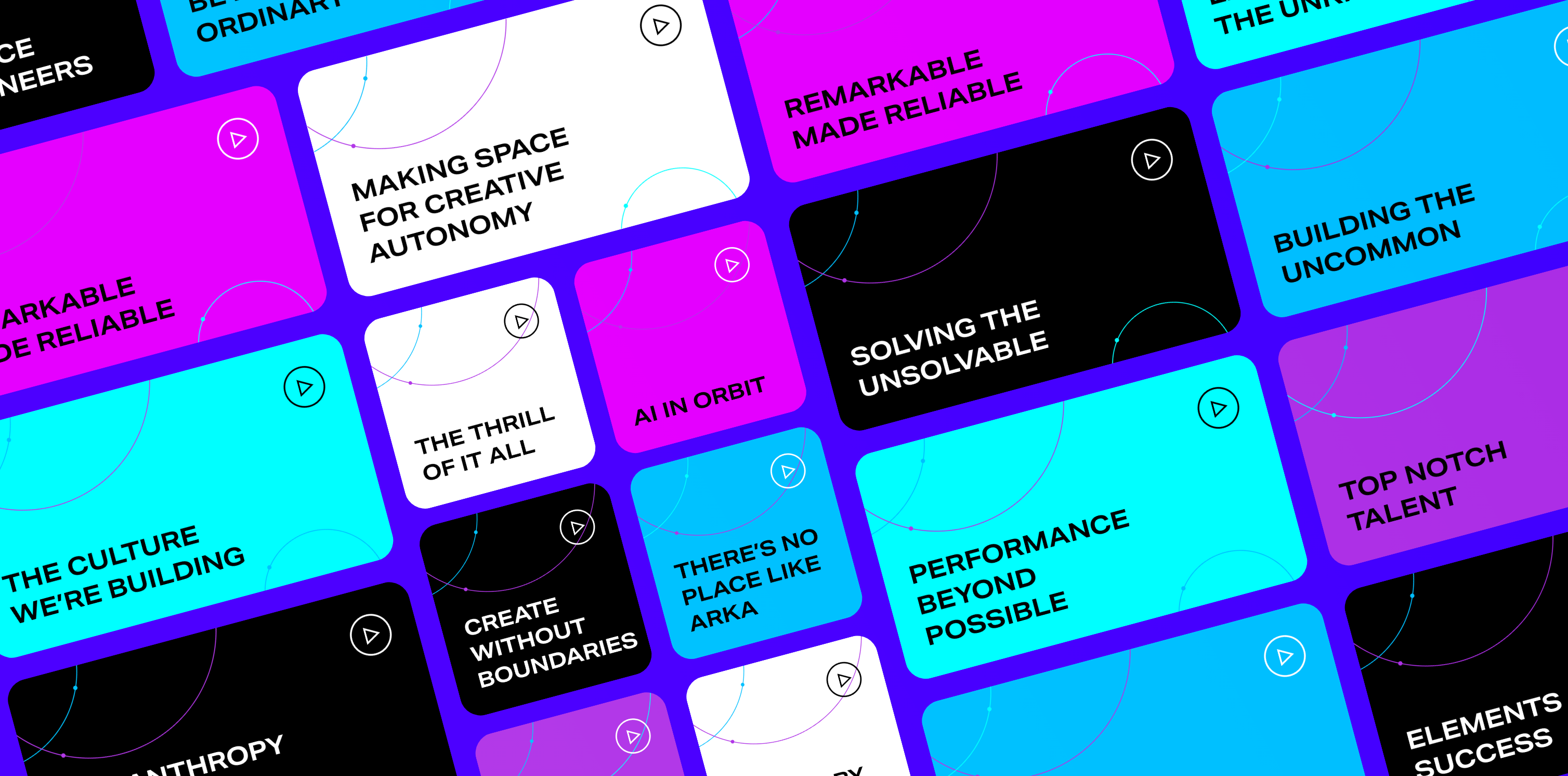
Challenges and Considerations
Balancing transparency with confidentiality is vital. Share enough to build trust while safeguarding sensitive operational details. Navigating geopolitical sensitivities and aligning branding with international norms ensures broader market relevance. Staying ahead of rapid technological and policy changes requires regular updates to your messaging and strategy.
Becoming a Future-Ready Brand
Innovation and reliability are the cornerstones of defense and aerospace branding. By building trust through transparent messaging, demonstrating leadership in cutting-edge technologies, and tailoring outreach to diverse stakeholders, you can position your company as a future-ready leader in these industries.
Looking to build a brand that stands out in defense and aerospace? Contact Bluetext to explore tailored strategies that position your company for long-term success.
As federal priorities evolve, government procurement officers are increasingly focused on resilience and industrial strength. While sustainability remains important, the emphasis has shifted to durability, adaptability, and long-term reliability. For B2G companies, this change represents an opportunity to reposition their branding and messaging strategies.
This blog explores how B2G organizations can align with these priorities while maintaining compliance with environmental standards.
Understanding Government Trends
Federal agencies are prioritizing resilience to address challenges such as infrastructure reliability, national security, and climate adaptation. Key takeaways:
- Resilience Over Sustainability: While green initiatives remain vital, procurement officers now seek solutions built to last.
- Focus on Durability: Products and services must demonstrate long-term value and reliability.

Repositioning for Resilience
To align with these trends, B2G companies should update their branding with a focus on industrial strength. Steps include:
- Highlight Durability: Showcase the reliability and lifespan of your solutions.
- Emphasize Adaptability: Illustrate how your offerings can evolve with changing government needs.
- Reinforce Compliance: Communicate your adherence to environmental and regulatory standards.
Communicating Value to Government Stakeholders
Government buyers prioritize clear, compelling messaging that speaks to their specific needs. Tips for success:
- Build Trust: Use testimonials and case studies from other government contracts.
- Use Data: Provide quantifiable proof of durability and adaptability.
- Simplify Messaging: Avoid jargon and focus on actionable benefits.

Leveraging Multi-Channel Outreach
A multi-channel approach ensures your message reaches all stakeholders. Consider:
- Digital Campaigns: Leverage LinkedIn, webinars, and email marketing to engage decision-makers.
- Content Marketing: Publish blogs, whitepapers, and videos that showcase resilience.
- Public Relations: Share success stories and thought leadership through media channels.
Navigating Challenges in B2G Branding
Shifting focus to resilience while maintaining a commitment to sustainability can be complex. Mitigate risks by:
- Balancing Messaging: Ensure both durability and environmental compliance are clear.
- Maintaining Credibility: Avoid overstating claims—back them with data and certifications.
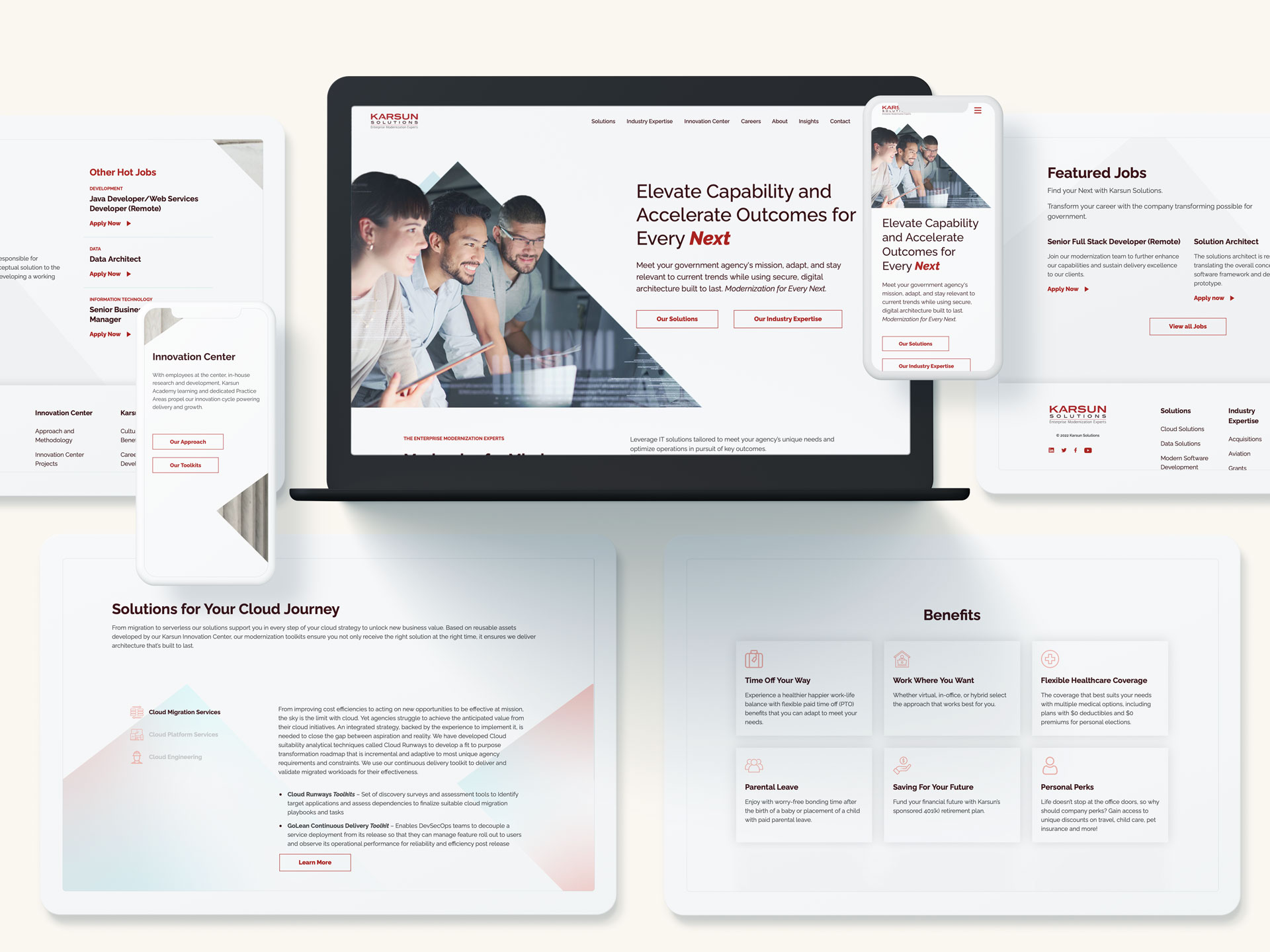
Positioning Your Brand for Resilience
In the evolving landscape of government priorities, resilience and industrial strength have become essential pillars for successful B2G branding. By aligning your messaging with these values, you can create a compelling narrative that appeals to procurement officers, policymakers, and other key stakeholders while maintaining compliance with environmental standards.
Need help crafting messaging that makes an impact? Contact Bluetext to discover how our branding expertise can position your organization as a trusted, resilient partner for government agencies.
Navigating the complexities of B2B marketing can be challenging—especially when targeting multiple industries. Each sector has unique needs, preferences, and pain points that require nuanced approaches. A one-size-fits-all strategy simply doesn’t cut it in today’s competitive landscape. Instead, building a versatile marketing strategy that spans multiple sectors involves understanding the dynamics of each industry while maintaining a cohesive brand identity.
In this blog, we’ll explore actionable steps to create an effective cross-sector B2B marketing strategy, focusing on segmentation, adaptive messaging, and industry-specific tactics.
Understanding Cross-Sector Dynamics
When targeting multiple industries, it’s crucial to recognize both the commonalities and differences between them. For example:
- Commonalities: Many industries share concerns about ROI, cost-efficiency, and customer satisfaction.
- Differences: Industries like healthcare may prioritize compliance and patient outcomes, while manufacturing focuses on operational efficiency and supply chain management.
Recognizing these dynamics allows you to position your solutions effectively for each audience.
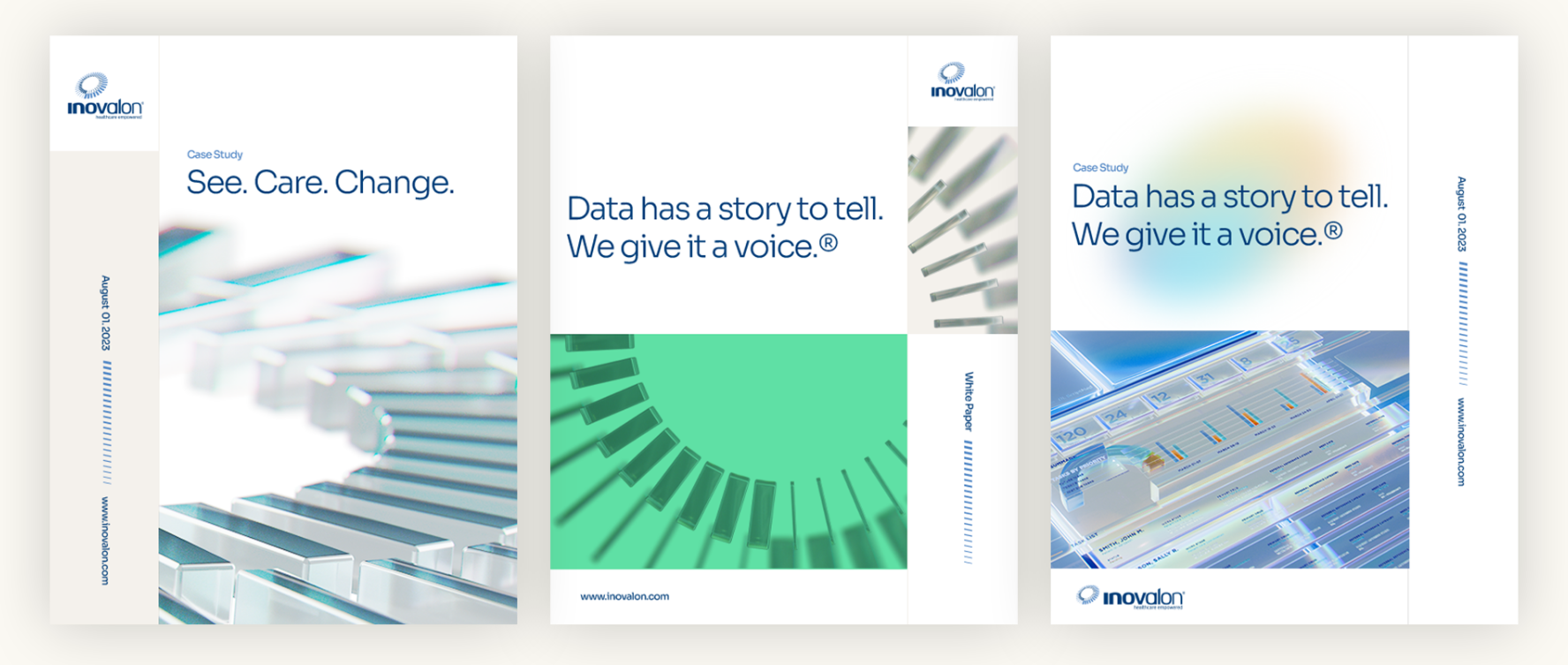
Developing a Robust Segmentation Framework
Segmentation is the foundation of any successful multi-sector strategy. Consider these steps:
- Segment by Industry: Use market research to identify the unique needs of each sector.
- Segment by Role: Tailor messages for decision-makers, influencers, and end-users.
- Use Data Analytics: Leverage CRM and marketing tools to uncover cross-industry patterns and customize your approach.
Crafting Adaptive Messaging Strategies
A strong brand identity should shine through all your messaging—but flexibility is key when addressing diverse sectors. Here’s how:
- Unified Brand Voice: Maintain consistency in tone and values across sectors.
- Tailored Content: Adapt case studies, whitepapers, and ad copy to highlight sector-specific benefits.
- Customer Personas: Develop profiles for typical decision-makers in each sector to align your messaging with their priorities.
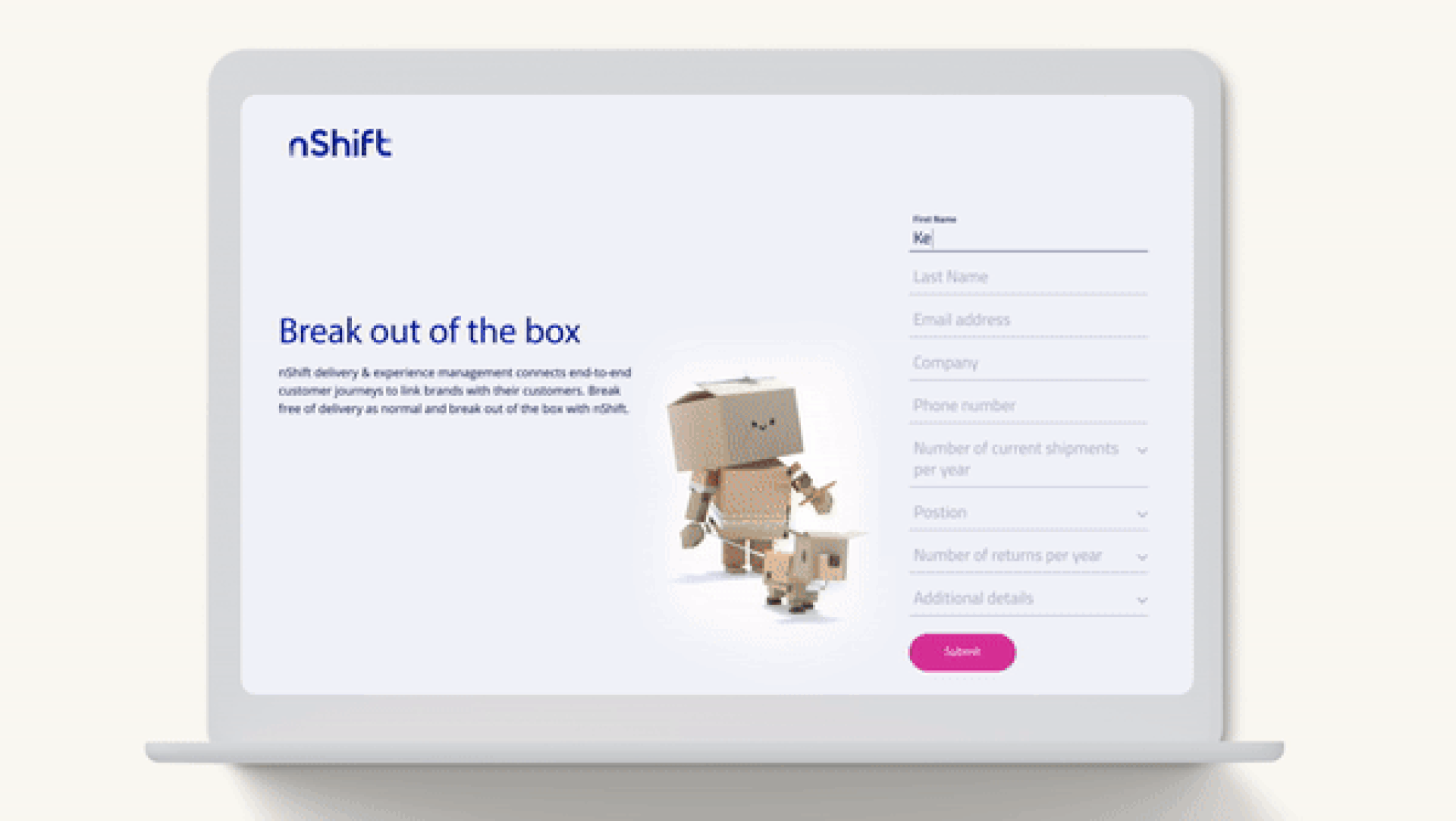
Tactics for Multi-Sector Marketing Success
Successful campaigns require the right tools and tactics. Consider:
- Localization: Adapt messaging for different regions and markets.
- Omnichannel Marketing: Use digital platforms, events, and traditional media to reach varied audiences.
- Case Studies: Share examples that showcase your versatility across industries.
Measurement and Optimization Across Sectors
To ensure your strategy remains effective, establish KPIs for each sector and regularly evaluate performance. Examples include:
- Engagement Metrics: Open rates, click-through rates, and website traffic.
- Conversion Rates: Leads generated per campaign.
- Customer Feedback: Insights from surveys and reviews.
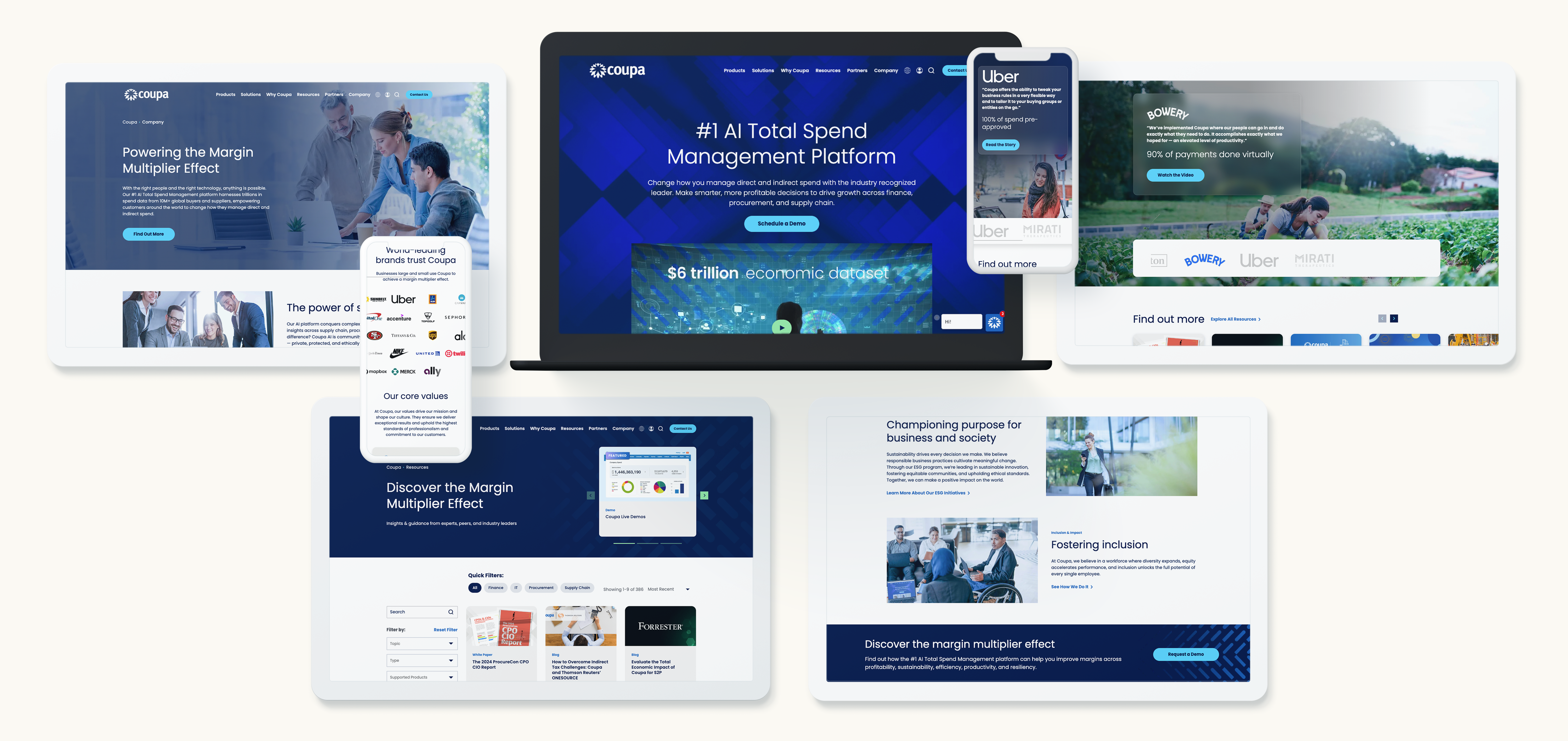
Your Path to Multi-Sector Success
Mastering multi-sector marketing is not just about flexibility—it’s about understanding the unique needs of each industry while maintaining a cohesive brand identity. By leveraging data, crafting tailored messaging, and staying attuned to audience behaviors, you can create strategies that resonate across diverse sectors.
Ready to take your B2B marketing strategy to the next level? Contact Bluetext today to learn how our expertise in multi-sector marketing can help your organization build a stronger, more adaptable presence.
Government contracting is a highly competitive and complex field. With stringent regulations, extensive procurement processes, and evolving agency priorities, standing out as a contractor requires more than just competitive pricing or technical expertise. It requires trust.
Thought leadership has become a key strategy for government contractors aiming to differentiate themselves. By sharing insights and expertise, contractors can build credibility, influence decision-makers, and foster long-term relationships with government clients. This blog explores why thought leadership matters in the GovCon space and how to implement it effectively.
Why Thought Leadership is Critical in GovCon
Government agencies prioritize partnerships with organizations they trust. Unlike the private sector, where quick decisions are common, government clients conduct extensive evaluations to ensure reliability, compliance, and alignment with mission goals. Thought leadership addresses these needs by:
- Establishing Credibility: Sharing valuable insights positions your brand as a knowledgeable and reliable partner.
- Influencing Decision-Making: Providing well-researched content can shape how agencies perceive challenges and solutions, aligning their priorities with your offerings.
- Creating Competitive Advantage: In a crowded market, thought leadership differentiates your company from competitors offering similar services.
In short, thought leadership transforms your brand from one of many contractors into a trusted industry expert.
Building a Thought Leadership Strategy for GovCon
To develop a successful thought leadership strategy, contractors must focus on understanding their audience and crafting content that addresses their unique challenges. Here’s how:
- Focus on Mission Alignment
Government agencies prioritize partners who understand their mission and objectives. Craft content that demonstrates how your expertise supports their goals—whether it’s enhancing national security, improving infrastructure, or driving technological innovation. - Prioritize Compliance and Risk Mitigation
Regulatory compliance and risk reduction are top concerns for government clients. Share insights on navigating procurement challenges, adhering to FAR/DFARS requirements, or ensuring cybersecurity readiness. - Leverage Industry Trends and Insights
Stay ahead of the curve by analyzing and commenting on emerging trends like AI in defense, sustainability initiatives, or digital transformation in government services. - Invest in Research-Driven Content
Original research or data-backed reports can provide unique perspectives, positioning your brand as a thought leader in the GovCon space.

Amplifying Your Thought Leadership
Creating thought leadership content is only half the battle—getting it in front of the right audience is equally important. Here are some effective distribution strategies:
- Government-Focused Platforms: Publish articles and whitepapers on platforms like GovExec, Defense News, or federal procurement forums.
- Social Media Engagement: Share insights on LinkedIn, engaging directly with government decision-makers and influencers in the space.
- Networking Events and Panels: Participate in or host industry events, offering a platform to discuss your expertise and connect with potential clients.
- Email Campaigns: Create targeted campaigns that deliver your thought leadership content directly to procurement officers and agency stakeholders.
A multi-channel approach ensures your expertise reaches the right audience at the right time.
Sustaining Long-Term Success with Thought Leadership
Thought leadership is not a one-and-done effort—it requires consistent commitment to creating and sharing valuable insights. Over time, this approach delivers significant benefits, including:
- Enhanced Brand Visibility: Frequent, high-quality content keeps your brand top-of-mind for government buyers.
- Stronger Relationships: Thought leadership builds trust and fosters deeper connections with agency decision-makers.
- Greater Influence: As a recognized expert, your brand can shape industry conversations and gain an edge in competitive procurements.
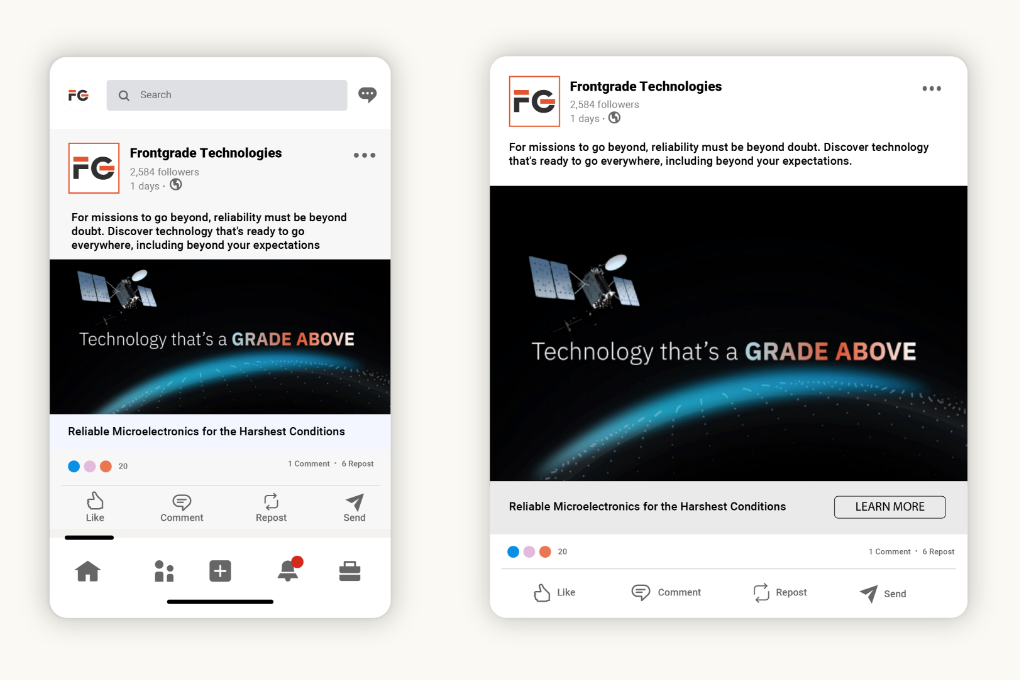
Elevate Your GovCon Brand with Expertise
In the government contracting space, expertise and credibility are essential for success. Thought leadership enables contractors to build trust, differentiate their offerings, and position themselves as indispensable partners to government agencies.
Looking to strengthen your thought leadership strategy and stand out in the GovCon market? Bluetext can help you craft compelling content that drives results. Contact us today to get started.
